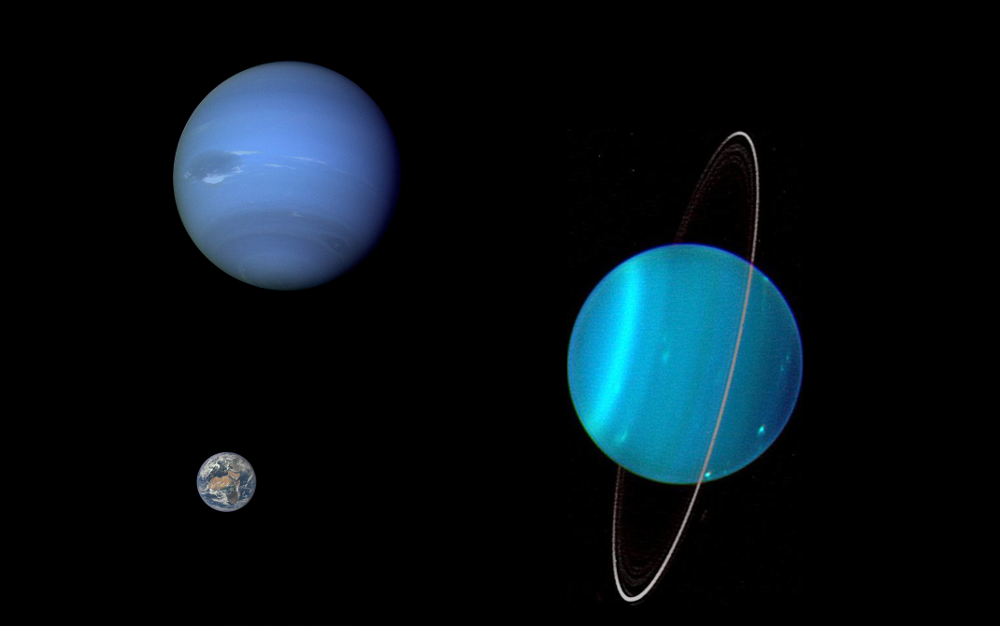
Sources of images can be found at http://spiff.rit.edu/classes/resceu/ss_planets/earth_moon_lineup.html
 Copyright © Michael Richmond.
This work is licensed under a Creative Commons License.
Copyright © Michael Richmond.
This work is licensed under a Creative Commons License.
Uranus and Neptune share many properties. For example, they are both about the same size: about 4 times the diameter of the Earth.

Sources of images can be found at
http://spiff.rit.edu/classes/resceu/ss_planets/earth_moon_lineup.html
However, they aren't as large as Jupiter or Saturn, nor as massive. As a result, their interior structure is somewhat different from those really big planets. They lack layers of metallic hydrogen; instead, their rocky cores are surrounded by mantles of icy materials.
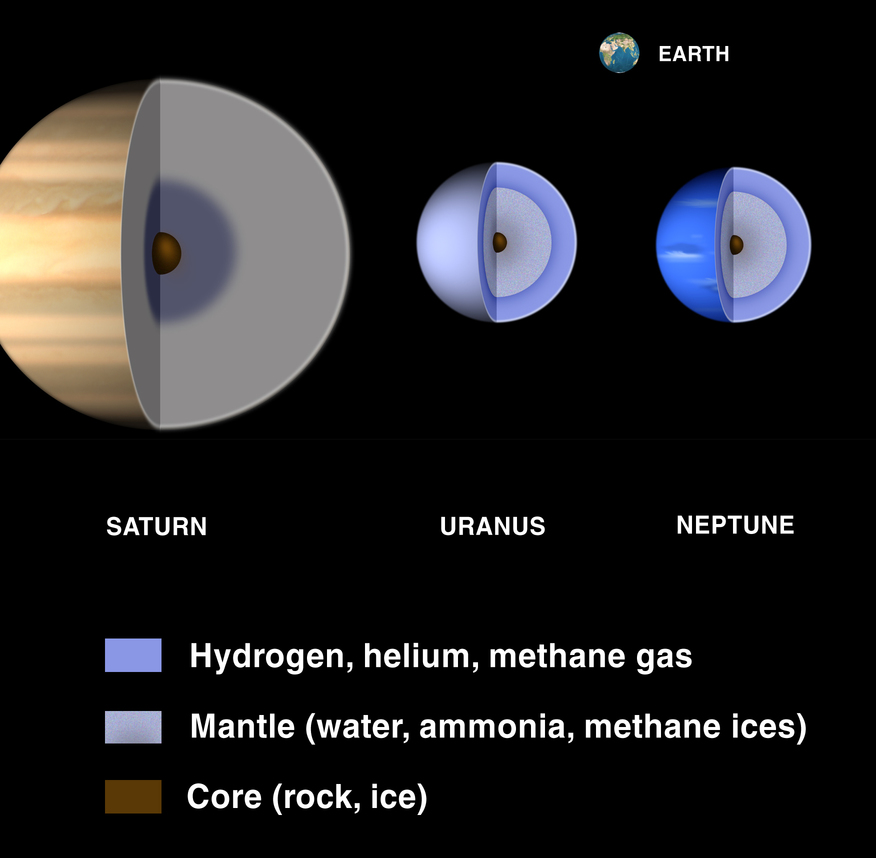
Image courtesy of
NASA/Lunar and Planetary Institute
Both planets have thick, thick atmospheres dominated by hydrogen and helium. One can see storms and belts and features in the clouds of both planets, though Uranus' features are more clear in in the infrared.
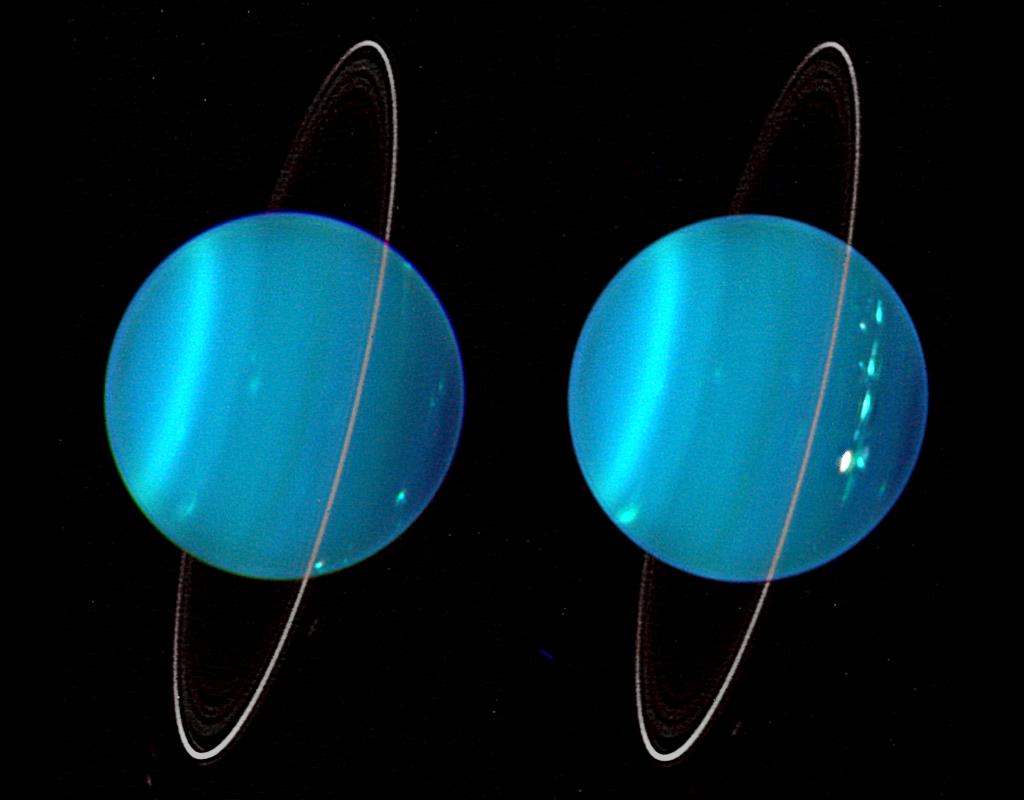
Image courtesy of
Lawrence Sromovsky, University of Wisconsin-Madison/W.W. Keck Observatory
Neptune's atmosphere is dotted with clouds and storms. The biggest is the Great Dark Spot, which has been seen for decades.
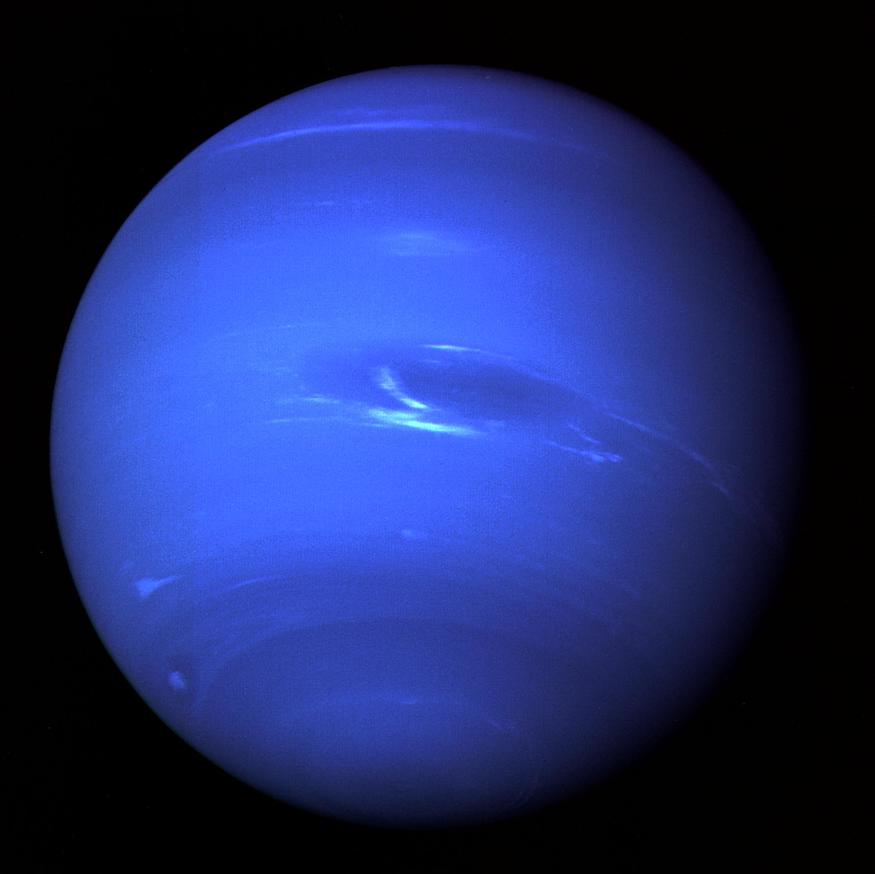
Image courtesy of
NASA/JPL
Both planets have magnetic fields which are significantly weaker than Earth's field. However, they are strong enough to cause aurorae at their magnetic poles, just as the Earth, Jupiter, and Saturn can do. But in the case of Uranus, the aurora doesn't seem to be in the right place:
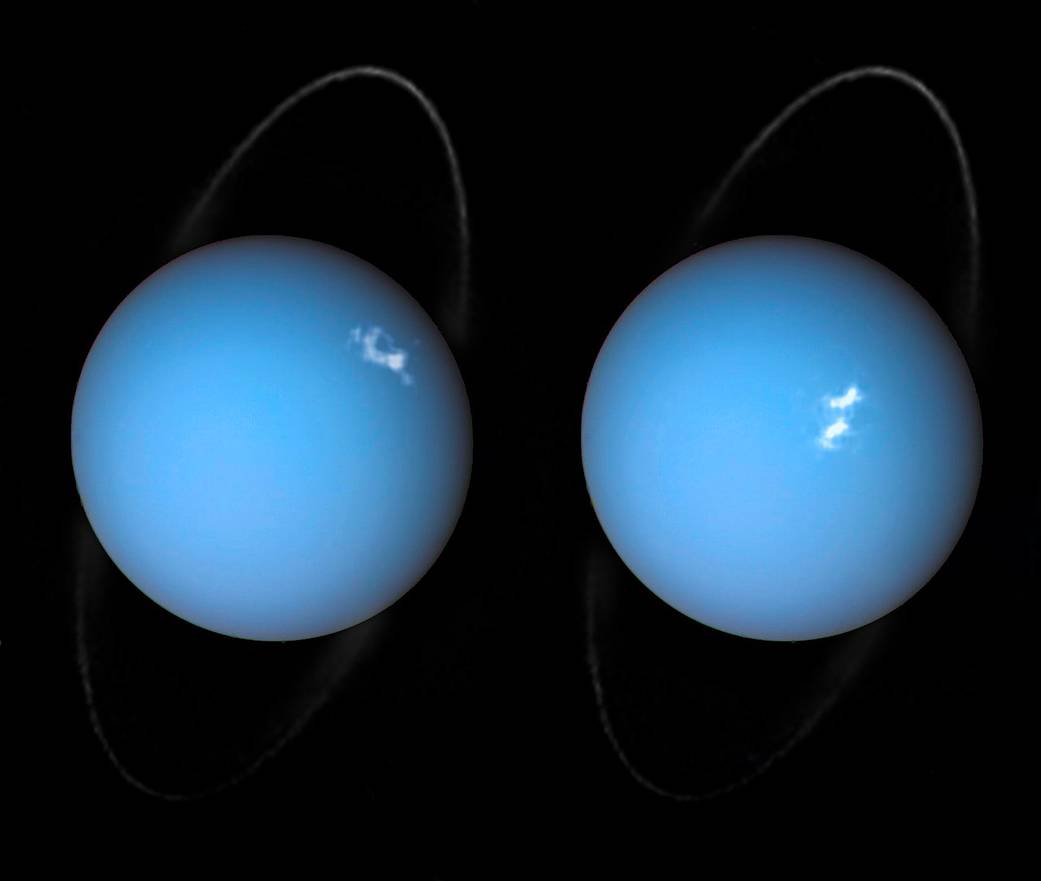
Images courtesy of
ESA/Hubble & NASA, L. Lamy / Observatoire de Paris
Q: Where SHOULD the aurora be?
Yes, we'd expect the aurorae to appear near the pole of a planet -- right? Well, Uranus is weird. Its magnetic field is NOT aligned with its rotational axis, but is tilted by about 59 degrees to it. So the aurorae show up in the "middle" of the planet!
Oh, and you remember, I'm sure, that Uranus' rotational axis is not perpendicular (or nearly perpendicular) to the planet of its orbit, like those of other planets, but instead nearly parallel to it. In other words, Uranus rotates "sideways".
That means that the seasons on Uranus last a long, long, time.
The orbital radius of Uranus is about 19.2 AU.
Q: How long is one Uranian year?
Q: How long is one Uranian winter?
After Uranus was discovered in 1781, astronomers followed it closely, measuring its position year after year. After 40 or 50 years, they began to notice something peculiar:
Uranus wasn't orbiting the Sun properly!
Sometimes, it was a little ahead of where it should have been; other times, it was a little behind.
What was happening? Was Newton's Law of Universal Gravitation not correct after all?
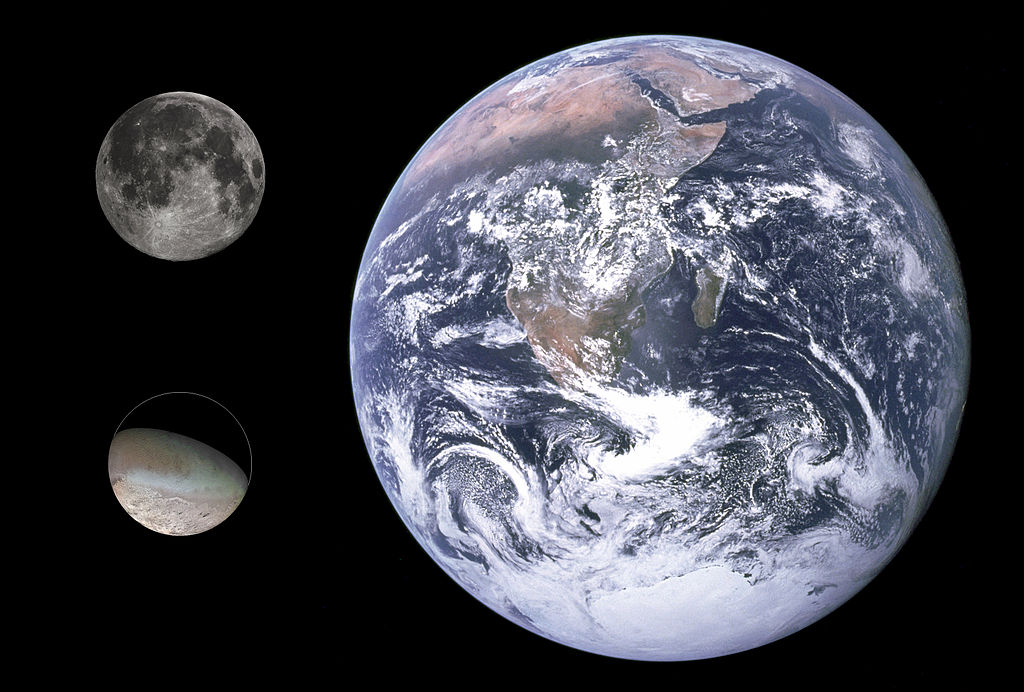
Image courtesy of
Gregory H. Revera and Wikimedia
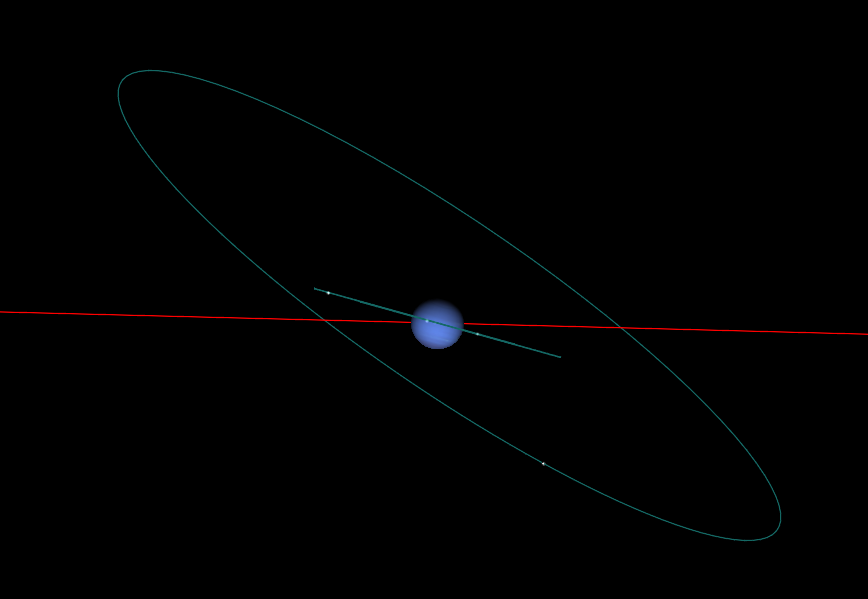
Now, we don't know as much about Triton as we would like. The main reason for our lack of information is that we had just ONE BRIEF CHANCE to study it: Voyager 2 zipped through the Neptune system in August, 1989, spending just a short time flying past Triton. As Emily Lakdawalla explains, there were a number of challenges for the scientists and engineers controlling Voyager 2:
Q: Neptune orbits the Sun at a distance of 30 AU.
Compared to our view from Earth, how bright is sunlight?
Q: How long would it take to send a single image
back to Earth?
For all these reasons, Voyager 2 was only able to collect a small amount of information on Triton as it flew past. Let's watch -- the movie below (click to activate) shows almost the entire dataset.

Movie courtesy of
NASA/JPL-Caltech/Lunar & Planetary Institute
Despite the brief opportunity, Voyager 2 did reveal many interesting features of this frozen world. The mosaic below shows a range of textures and colors, suggesting that the terrain changes significantly from place to place.
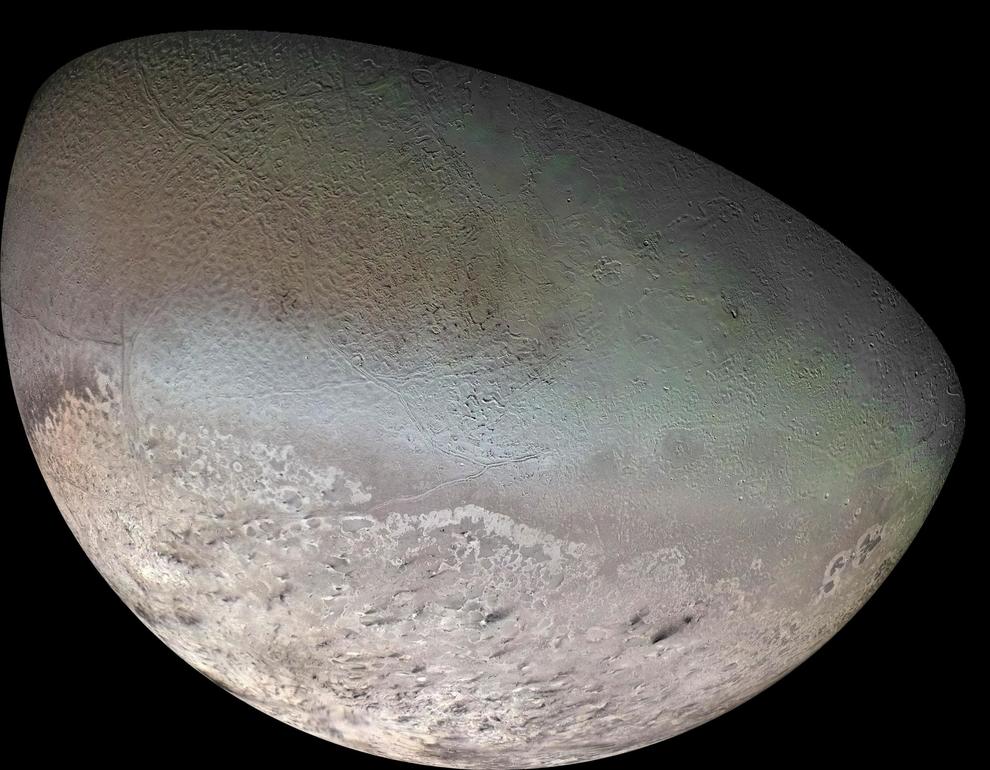
Image courtesy of
NASA/JPL/USGS
Note that large regions are covered with a very shiny material. That material reflects so much of the incoming sunlight (more than half of it, in some cases) that the surface of Triton is really, really cold.
What temperature would we expect an ordinary, airless rock to have at Neptune's distance from the Sun?

But the icy surface reflects so much of the incoming sunlight that the temperature of the ground is around 38 Kelvin.
Despite the very cold temperatures, Triton is not a dead, frozen world. It's a live, frozen world.
The image below (which has been modified to enhance the vertical scale of features) shows a portion of the surface which features a chain of volcanic features: note the smooth areas around the central line of hills. Those smooth areas are the result of lava flows which have frozen and hardened ... but the "lava" is composed of water and other ices!
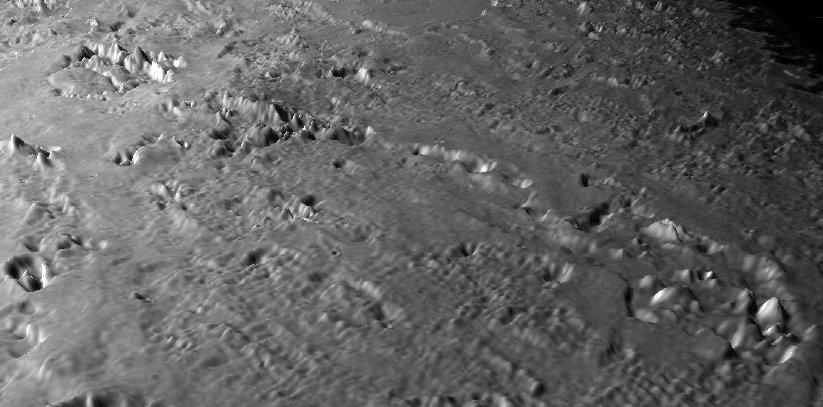
Image courtesy of
NASA/JPL/Universities Space Research Association/Lunar & Planetary Institute
A few of the Voyager photographs show features that look very much like volcanic vents, surrounded by dark streaks formed by material which was ejected and then fell back to the surface.
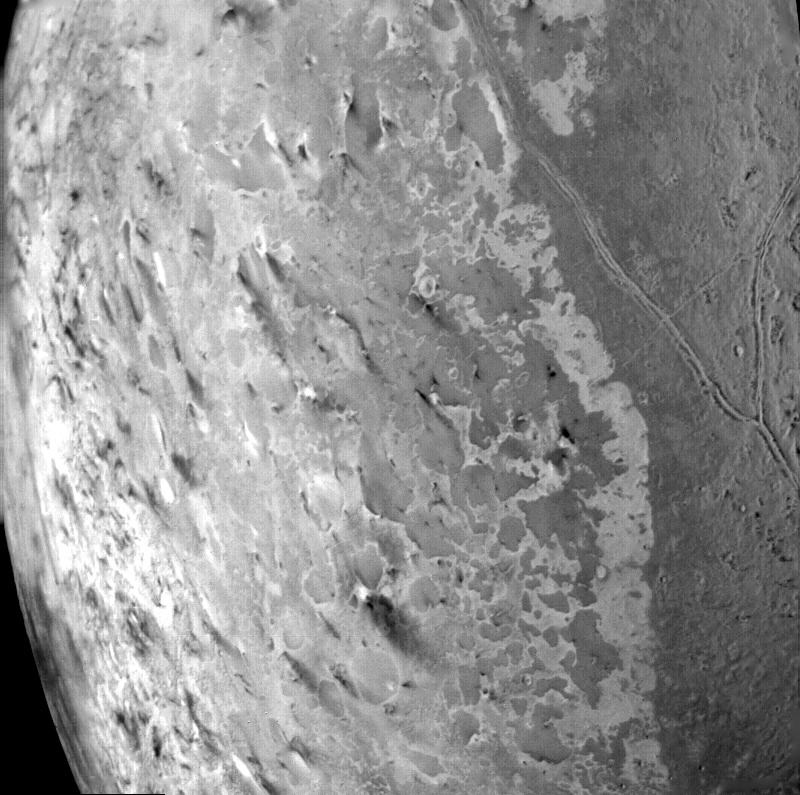
Image courtesy of
NASA/JPL
There's even one volcano which was caught in the act of erupting. If you look carefully at the sequence of three images below -- taken about 45 minutes apart -- you can see a plume of material moving from left to right across the landscape. (It's pretty subtle ...)
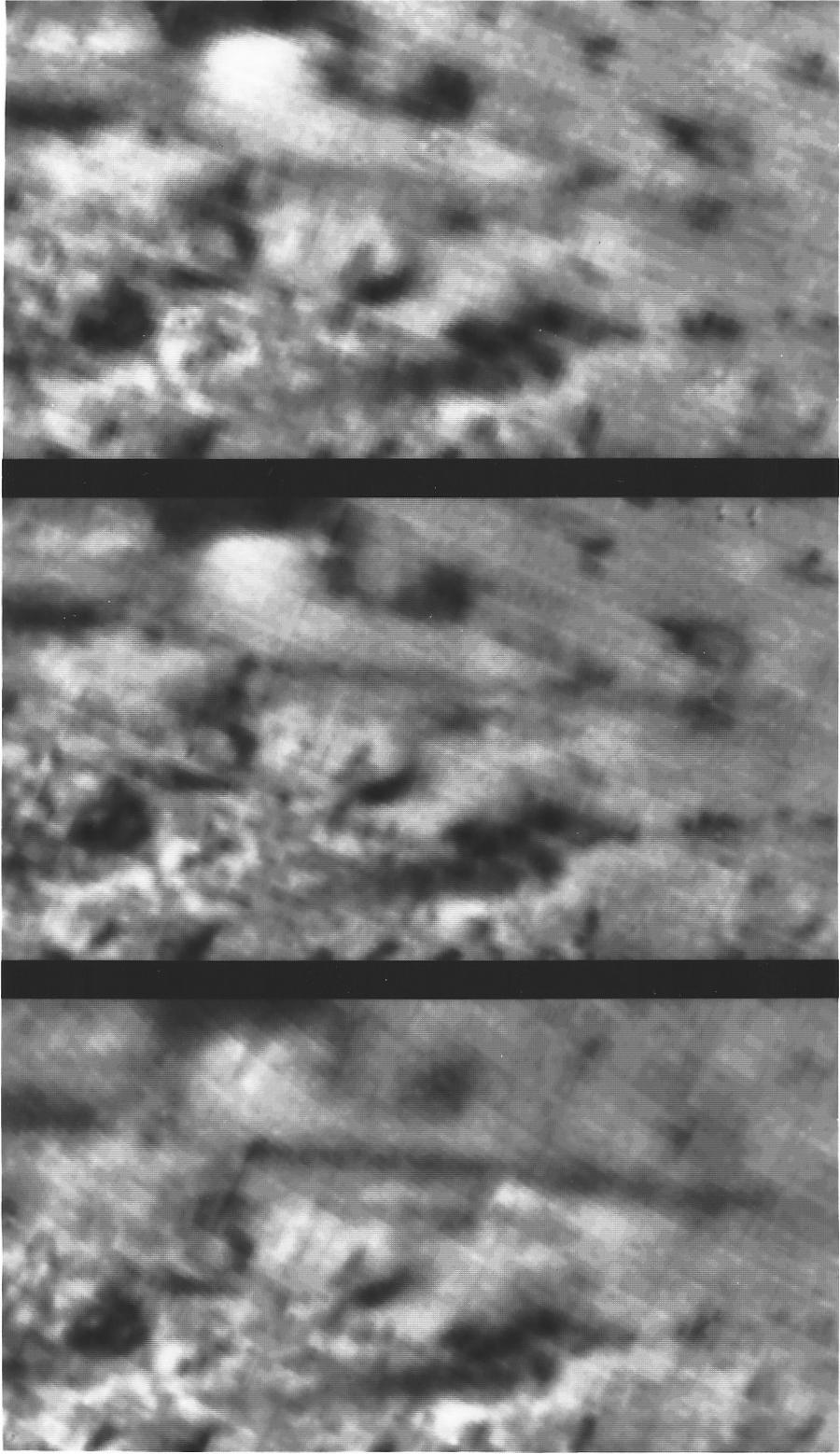
Image courtesy of
NASA/JPL
But wait -- why should the plume of gas and dust move in one particular direction? On Earth, of course, clouds of volcanic ejecta are blown by the wind. Does this mean that Triton might have winds?
Yes! It turns out that Triton does have an atmosphere -- though it is very thin and very cold. If you look very carefully, you can see a cloud just above the limb of the satellite in this image from Voyager 2. The top frame shows the original image, the bottom a version with the surface colored pure white.
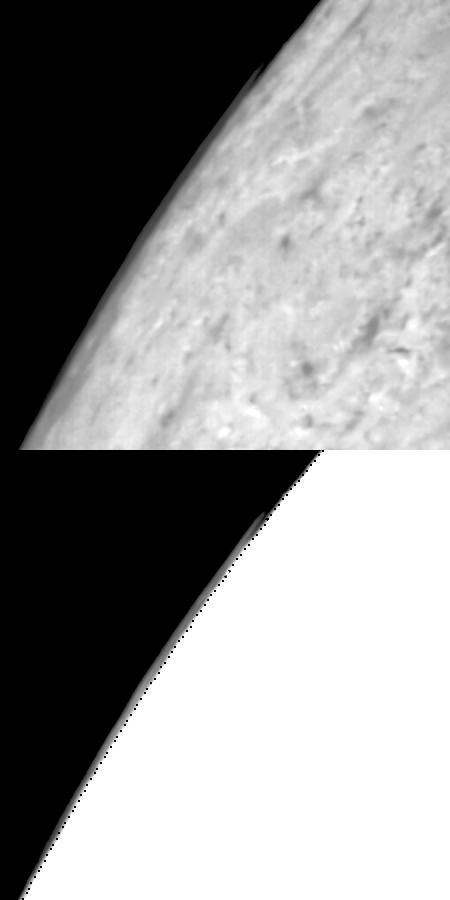
Image courtesy of
NASA/JPL
About a decade after the Voyager 2 visit, the Hubble Space Telescope was used to measure the atmosphere in a different way, via an occultation. HST measured the brightness of a star as Triton slowly passed in front of it. The dip in brightness shows VERY small differences from a model of a simple solid sphere; but those differences allow scientists to measure some properties of the gas just above the surface.
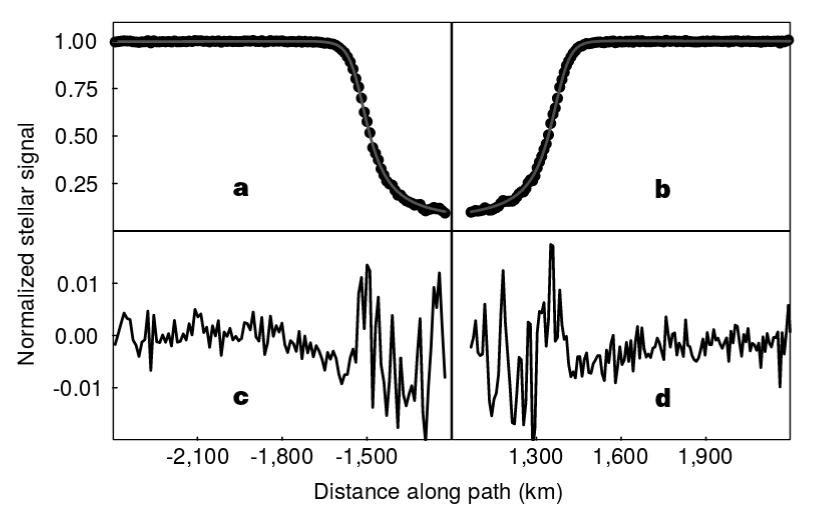
Figure 1 taken from
Elliot et al., Nature, 393, 765 (1998)
The properties of Triton's atmosphere can be summarized as
 Copyright © Michael Richmond.
This work is licensed under a Creative Commons License.
Copyright © Michael Richmond.
This work is licensed under a Creative Commons License.